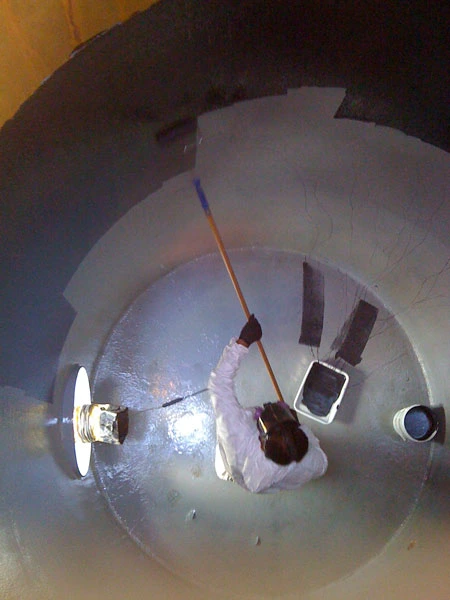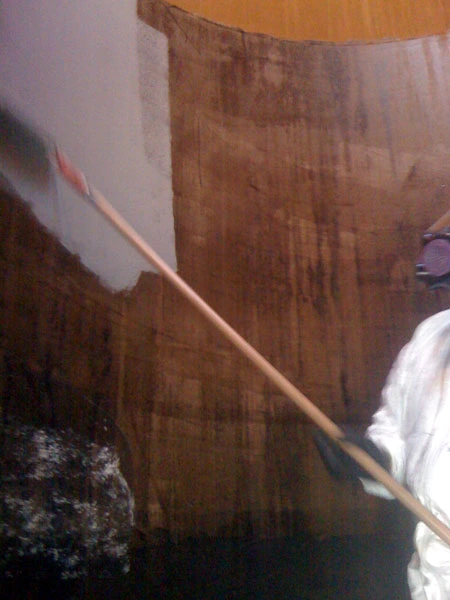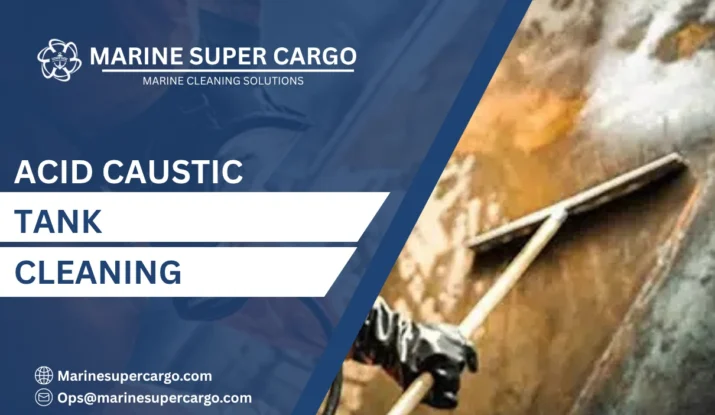Chemical tankers transporting acids and caustic substances face unique operational challenges during cargo changeovers. Acid caustic tank cleaning requires specialized protocols that prioritize crew safety, environmental protection, and vessel integrity. These aggressive chemicals demand meticulous attention to detail and strict adherence to international regulations.
At Marine Super Cargo, we deliver comprehensive acid caustic tank cleaning solutions that meet stringent IMO requirements. Our experienced teams understand the critical nature of chemical cargo operations and implement industry-leading procedures for every assignment. Proper acid caustic tank cleaning prevents cross-contamination, protects cargo quality, and ensures vessel readiness for subsequent shipments.
Understanding Chemical Cargo Residues
Acidic and caustic cargoes leave distinct residue patterns throughout cargo tanks. Acids typically create corrosive films along bulkheads, while caustic substances form crystalline deposits in areas with reduced circulation. The port and starboard tank walls, along with heating coils and structural members, accumulate the highest concentration of residues.
Acid caustic tank cleaning demands thorough knowledge of chemical properties, reactivity, and neutralization procedures. Incompatible cargo sequences without proper acid caustic tank cleaning can trigger dangerous reactions, generating toxic fumes or damaging tank coatings. Marine Super Cargo employs chemical cargo specialists who assess each situation individually.
MARPOL and IBC Code Compliance
MARPOL Annex II governs the control of pollution by noxious liquid substances carried in bulk. Acid caustic tank cleaning operations must comply with discharge standards and documentation requirements specified in this convention. The International Bulk Chemical Code (IBC) provides detailed guidance for chemical tanker operations, including cleaning procedures.
All washings from acid caustic tank cleaning must be managed according to cargo category classifications. Category X substances require prewash procedures with discharge to reception facilities, while other categories may permit controlled discharge under specific conditions. Vessel operators must maintain accurate records in the Cargo Record Book as mandated by IMO MEPC regulations.
Pre-Cleaning Assessment and Planning
Before commencing operations, conducting a comprehensive risk assessment proves essential. The ship’s chemical expert reviews the previous cargo properties, next cargo compatibility, and required cleanliness standards. This assessment determines the specific acid caustic tank cleaning methodology and safety precautions needed.
Atmospheric testing throughout the cargo space confirms oxygen levels and identifies hazardous vapor concentrations. The bow, stern, and overhead spaces require particular attention during initial ventilation. Emergency response equipment must be positioned strategically, with personnel briefed on chemical-specific hazards.


Neutralization Procedures
Acid Cargo Residue Treatment
Following acidic cargo discharge, the initial rinse removes bulk residues. Neutralization using dilute caustic solutions then commences, carefully monitoring pH levels throughout the process. This stage of acid caustic tank cleaning requires precise chemical dosing to avoid excessive alkalinity.
The neutralization solution circulates throughout the cargo space, contacting all surfaces including frames, stiffeners, and coil piping. Monitoring stations at the forward and aft sections track pH values until neutral conditions are achieved across the entire tank volume.
Caustic Cargo Residue Treatment
Caustic cargo tanks undergo initial hot water flushing to dissolve crystalline deposits. Weak acid solutions are then introduced for neutralization, with continuous pH monitoring ensuring complete reaction. This critical phase of acid caustic tank cleaning prevents residual alkalinity that could compromise subsequent cargoes.
Marine Super Cargo utilizes advanced monitoring equipment that provides real-time pH data from multiple tank locations simultaneously.
High-Pressure Water Washing
After neutralization, intensive hot water washing removes all chemical residues from tank surfaces. High-pressure Butterworth machines positioned at strategic locations deliver comprehensive coverage. Water temperatures between 60-80°C enhance cleaning effectiveness while protecting tank coatings.
The washing sequence proceeds systematically from overhead surfaces downward, ensuring complete residue removal from the port and starboard bulkheads, structural members, and tank bottom. Multiple washing cycles may be required depending on cargo reactivity and tank condition.
Ventilation and Atmospheric Testing
Thorough ventilation follows washing operations, utilizing forced air circulation to remove chemical vapors and moisture. Continuous atmospheric monitoring confirms safe entry conditions before inspection teams enter the cargo space. Testing must verify oxygen content exceeds 21%, flammable gas concentrations remain below 1% LEL, and toxic vapor levels stay within permissible limits.
Final Inspection and Wall Wash Testing
Visual inspection verifies cleanliness throughout the cargo space, checking all surfaces including ladder wells, heating coils, and sounding pipes. Wall wash testing provides objective evidence of cleanliness, with samples analyzed for pH, specific gravity, and chemical contamination.
Inspection teams document findings photographically, creating records that satisfy charterer requirements and port state control inspections. This documentation protects vessel operators during commercial disputes and demonstrates compliance with SOLAS safety management requirements.
Safety Equipment and Personnel Protection
Personnel engaged in chemical tank operations must wear appropriate protective equipment including acid-resistant suits, face shields, and respiratory protection. Emergency showers and eyewash stations must be readily accessible throughout the operation. Marine Super Cargo maintains strict safety protocols aligned with molasses tank cleaning.
Frequently Asked Questions
Q1: Why is neutralization necessary during chemical tank cleaning?
Neutralization prevents dangerous reactions between incompatible cargoes and protects tank coatings from chemical damage.
Q2: How long does acid caustic tank cleaning typically require?
Complete operations generally take 18-36 hours depending on cargo reactivity, tank size, and required cleanliness standards.
Q3: Can chemical washings be discharged overboard?
Only under specific MARPOL Annex II conditions based on cargo category, distance from land, and vessel speed requirements.
Q4: What pH range indicates proper neutralization?
A pH range of 6.5-7.5 indicates successful neutralization for most chemical cargo operations.
Q5: Why is continuous atmospheric monitoring important?
Chemical vapors can accumulate rapidly in enclosed spaces, creating toxic or explosive atmospheres that endanger personnel safety.
Trust Marine Super Cargo for professional chemical cargo tank cleaning that prioritizes safety, compliance, and operational efficiency.


